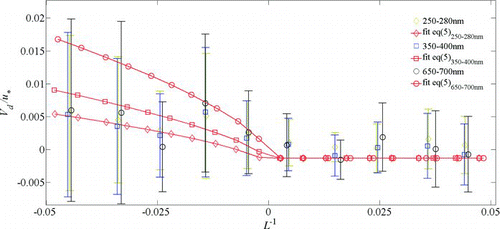Figures & data
FIG. 1 The diurnal cycle (30 min averaged bins) of the particle size distribution for a week during autumn days measured by the GRIMM OPC at the Yatir forest. The color scale depicts log (dN/dlogDp) for particle concentrations in particles L −1. (Color figure available online.)
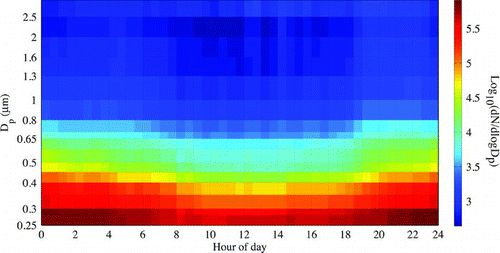
TABLE 1 Average values of critical parameters for day hours (7:00–15:00) at the Yatir station. The bracketed values are the standard deviation from the mean, or the interquartile range (IQR) of the median. A total of 901 half-hour measurements were collected during the campaign
FIG. 2 Diurnal cycle of the half hour mean values of (a) friction velocity and (b) Obukhov length averaged over the full autumn day's data set. (Color figure available online.)
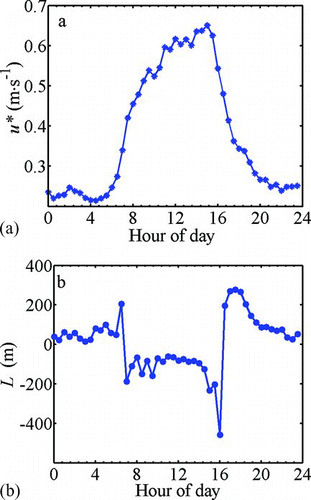
FIG. 3 Dependence of daytime deposition velocity on wind direction (15° sections) at the Yatir station. Data points and bars are the mean deposition velocities and standard deviations per 15° section over the full autumn days data set. The horizontal black (green) line marks zero deposition velocity. (Color figure available online.)
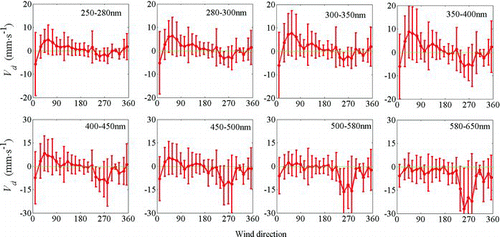
FIG. 4 Diurnal cycle of the half hour averaged deposition velocity during autumn days. Data points are displayed for downward fluxes (Vd > 0) by a solid (blue) line, upward fluxes (Vd < 0) by a dotted (red) line, and their sum by a dashed line (green) and exclude the westerly wind directions (225°–360°). Note the change in Y-scale between the upper and lower panels. (Color figure available online.)
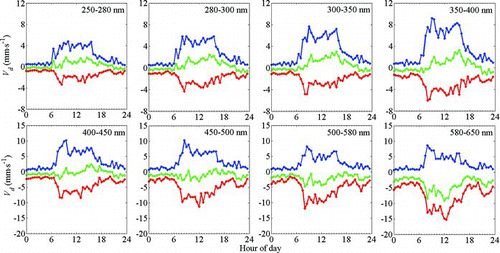
FIG. 5 (a) Vd as a function of the friction velocity for size bin 250–280 nm. The open (red) circles represent the mean and standard deviation values (binned in 0.2 increments). Vd/ u * (b) and Vd (c) as a function of particle diameter between 250 nm and 650 nm during autumn days. Data points are averaged for day hours (07:00–15:00), Vd > 0 and exclude the westerly wind directions (225–360°). (Color figure available online.)

FIG. 6 Mean values of half hourly Vd/ u * vs. L −1 for size bins 250–280 nm, 350–400 nm, and 580–650 nm (Binned in 0.01 increments). Data points are for day hours, Vd > 0 and exclude the westerly wind directions (225–360°). The solid (red) lines show the modified parameterization equation (EquationEquation (5)) for these three size bins following Gallagher et al. (Citation1997). The equation coefficient (k1) for each size bin is 0.005 as determined by the match of the parameterization (EquationEquation (5)) to the Yatir data for the smallest size bin 250–280 nm. (Color figure available online.)
